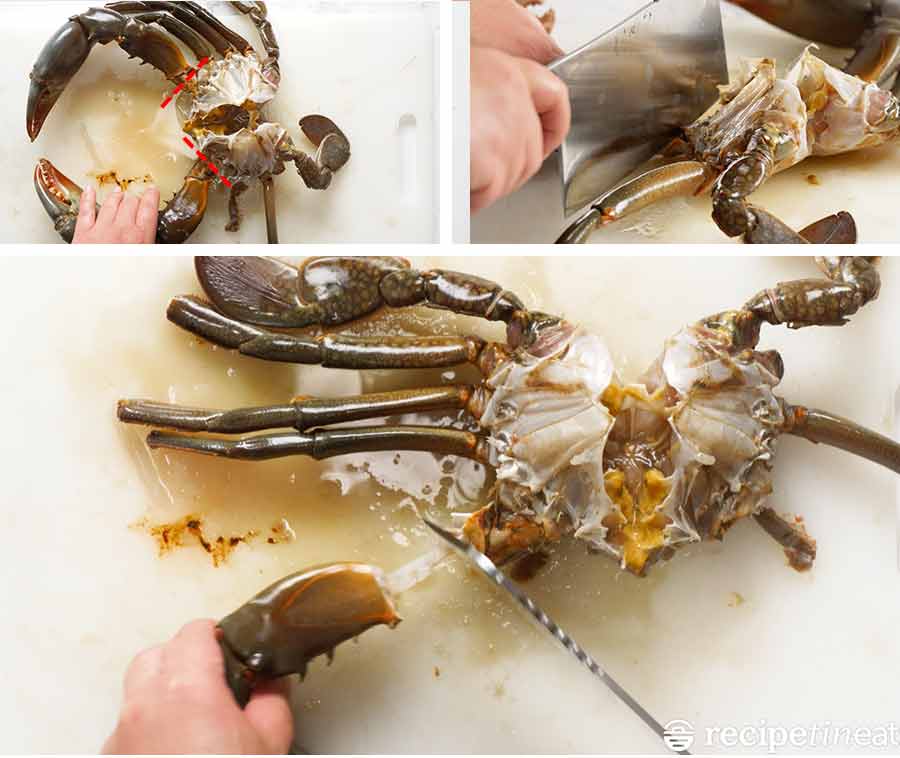Crab is a cherished delicacy for seafood lovers across the globe. When cooked and prepared properly, crab meat delivers sweet, succulent flavors and tender textures that are hard to match. However, getting the most out of your cooked crab requires learning the proper techniques for cutting and breaking it down after cooking. With the right approach, you can fully enjoy this crustacean’s sweet rewards.
In this article, we’ll provide a complete guide to cutting cooked crab including step-by-step instructions helpful tools and tips for success. By following these crab cutting basics, you’ll be able to showcase the crab’s delightful flavors and textures at their best. Let’s crack into it!
Necessary Tools for Crab Cutting
Having the right tools on hand will make the crab cutting process much easier Here are the most essential items needed
-
Sharp Kitchen Shears – Sturdy shears are perfect for snipping off legs and separating joints Look for a pair designed specifically for kitchen use
-
Crab Crackers/Pliers – These are ideal for breaking through tough shells and extracting meat.
-
Small Fork or Crab Pick – Helpful for pulling meat out of tight spaces.
-
Cutting Board – A stable, non-slip surface to work on.
-
Mallet or Small Hammer – Optional but useful for cracking stubborn shells.
-
Bowl – For collecting crab meat as you extract it.
Step-By-Step Crab Cutting Instructions
Once your tools are ready, it’s time to dig in. Follow these steps for successful crab cutting:
1. Twist Off Legs and Claws
- Grasp each leg and claw where it connects to the body. Twist and remove, placing them in a bowl.
2. Crack Claws
- Use crab pliers or crackers to break the shells. Extract meat.
3. Cut Body in Half
- Place crab belly-side up and use kitchen shears to cut straight down the center.
4. Scoop Out Interior
- Use a spoon or small fork to scrape out any guts, membranes or gills.
5. Break Body Into Sections
- Crack body with mallet or hammer. Break into smaller pieces for easier meat removal.
6. Pick Out All Meat
- Use your hands, small fork or pick to extract every bit of crab meat from each section.
7. Discard Shells
- Double check for any remaining morsels of meat before tossing shells.
And that’s it – your crab is ready to use! Simply toss the sweet meat with desired seasonings or sauce ingredients.
Handy Tips for Crab Cutting Success
Follow these handy tips to help make the process smooth and efficient:
-
Work over a large bowl or tray to collect juices and meat.
-
Don’t throw out shell liquid – it’s loaded with flavor!
-
Handle legs and claws gently to keep meat intact.
-
Crack shells before cooking for more even heating.
-
Let cooked crab cool slightly before cutting – prevents sticking.
-
Use a soft touch – don’t smash shells and meat.
-
Cut an uncooked crab while still alive for best flavor.
-
Clean tools right away – dried-on juices are hard to remove.
Putting Crab Meat to Use
Once cut up and shelled, cooked crab can be used in a wealth of mouthwatering ways. Here are some tasty ideas:
-
Simple crab cakes
-
Mixed into seafood pasta or salad
-
As a topping for fish or steaks
-
In crab dip or crab rangoons
-
Piled onto a toasted sandwich
-
Folded into omelets or frittatas
-
As a stuffing for mushrooms or peppers
-
Mixed with mayo for crab rolls or toast
-
Baked into a hot crab casserole
With the right prep, cutting and shelling, cooked crab can take your recipes from great to spectacular. Follow these crab cutting basics and enjoy this briny delicacy at its very best. Just take your time, use the right tools and handle the crab with care – the sweet rewards will be well worth the effort.

Where can you buy live crab?
In my experience, mostly Asian markets carry live crab. You can bring back the crab alive and handle the chopping at home.

How do you store live crab before chopping?
A common misconception is to soak the crab in a pot of water to keep it alive until it’s time to cook. That is completely UNTRUE! Freshwater crab are used to a certain mixture of ocean water than our normal tap water at home. If you submerge a live crab in normal water, the crab will die quickly of shock.
The way you should store live crab before you cook it is to put the crab in the refrigerator. This will slow down the dying process and the crab will most likely just be kinda “dizzy,” but will still be alive for a couple hours.
How to Eat Crabs
FAQ
What part of a crab can’t you eat?
Thankfully, nearly every part of a crab can be eaten, with one exception: the lungs or gills, aka “The Devil’s Fingers.” Despite the myth that they’re harmful to eat, crab lungs are not inherently toxic. The real reason to steer clear of them is that they just don’t taste good.
